Intern Weekly Responses: Trendswatch 2019

Every week we’re asking our summer interns to share some thoughts and responses to various experiences and readings. This week we asked them to choose one of four articles from the Center for the Future of Museums Trendswatch 2019! To read more posts from JMM interns, past and present, click here.
~From Intern Hannah Balik: Give Me Shelter: Everyone deserves a place to live
Homelessness is an issue that disproportionately affects already marginalized populations including disabled persons, formerly incarcerated individuals, the elderly, people of color, and people in the LGBT community. Baltimore has a large homeless population, with a report by the federal Department of Housing stating that on any given night in 2017, there were 2,669 individuals experiencing homelessness. However, that number is not the full story. That number only counted people in certain shelters that participated in the study, and not those on the streets or in programs who were not counted. The true number is much higher and continues to grow. One quarter of Baltimore residents live at or below the federal poverty live, with half of poor residents living in deep poverty, meaning they live at or below 50% of the poverty line. It’s easy to feel helpless when confronted with a large systemic issue such as homelessness. However, there are certain things we can do to alleviate as much of the burden that we can in a museum context.
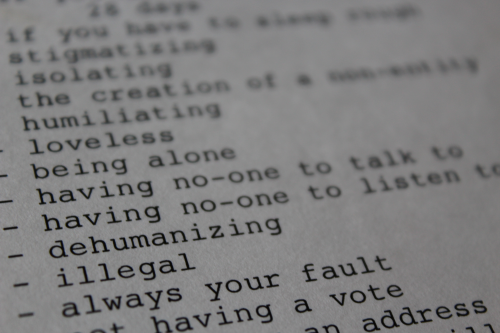
First, we can make sure our museum’s doors are truly open to all. This means keeping our courtyard available for anyone to sit or rest in, and our restrooms available for anyone to use. We already let the public use our courtyard and restrooms during museum hours, but we could make that more known or provide care packages in the restroom for those in need. We can talk to some of our Jonestown neighbors, such as the delis on Lombard Street to donate some food or give us some vouchers to include in these packages. Besides that, accessibility is one of the main things that a museum can do for its community. Making sure we are available to all of those who want to learn, not just those who have the means to make donations. Free admission, or a sliding scale admission for those who are experiencing financial insecurity is a great option. We have a wealth of knowledge inside these walls, and it is our responsibility to share it, especially to those who cannot afford museum admission or would not normally seek it out. The museum could also facilitate more free public programs aimed for a wider audience. These events could include things like free food and personal items along with the educational experience that comes with museums. The JMM also has a large network of members, volunteers, and staff. We can coordinate a clothing drive or send out email-blasts with ways that they can help their community, including organizations that they can donate both their money and time to.
The issue of homelessness is systematic and cannot be solved by one group of people. However, we can do certain things as a community to uplift those who need assistance in our own community. Museums can help facilitate donations and educational opportunities for those in need. We can also give people who have experienced homelessness themselves jobs at the museum to help create an environment at the museum that is as welcoming and accessible as possible. We can also do our best as a cultural institution to uplift the voices of those who call Jonestown home, however that looks for them at that moment. We can listen to the stories that these individuals have to tell and celebrate them by including them in our exhibits in some way. Our permanent exhibit, Voices of Lombard Street, is a great place to show these stories. Museum across the country and world have done similar programs in the past, such as the Portland Art Museum and the Museum of Street Culture. In the UK, there is even a Museum of Homelessness which aims to tell these stories and educate the public and hopefully make change through research, public events, and exhibitions. We could easily follow in these footsteps and show off the community the museum sits in, while offering a way for these often-silenced voices to be heard.
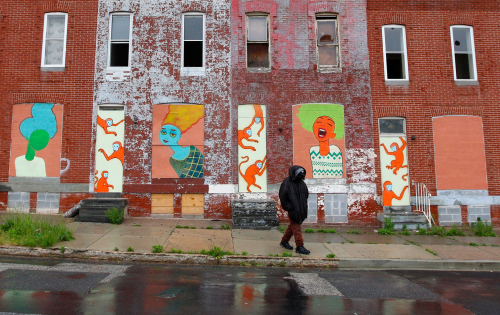
Some of the Museum’s neighbors are already doing a lot in the community in terms of helping those who are homelessness. Around the corner from the museum sits Helping Up Mission, an overnight shelter that also has a long term recovery program for addiction aimed at those experiencing homelessness. The museum donates leftover food from programs and events to the Mission, but we could work more closely with them. Also in our neighborhood is the headquarters for HealthCare for the Homeless, which helps provide necessary medical services and housing for those in need. We, as a museum, can help support our neighbors who are already doing great work in our community. Beyond monetary and personal care item donations, we could help coordinate events together that provide basic needs but also educational and culturally enriching experiences for the men in their programs. We could put a donation box in the front of the museum, where the money goes to Helping Up and HCH. It is not enough to sit silently while systematic injustices are happening. Even though we cannot fix homelessness, we can aid and uplift those in need in our community the best that we can.
Please consider giving a donation to the amazing people at both HealthCare for the Homeless MD and Helping Up Mission.
~From Intern Elana Neher
This week, I chose to read Take Care: building resilience and sustainable practice from the Center for the Future of Museums Trendswatch 2019. When I saw the title, I assumed that the article would be discussing sustainability from an environmental standpoint but boy was I wrong. The article does not address taking care of the earth, but about taking care of oneself. It starts by defining “self-care,” what it has meant in the past and what it means today.
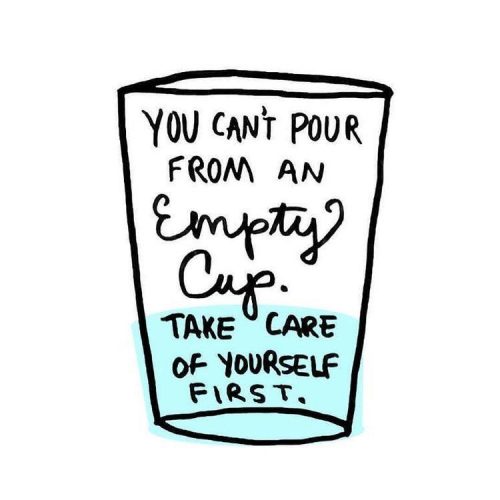
The beginning of the article explains that self-care has been used throughout the past to “affirm the self-worth of marginalized people and foster the physical and psychological resilience they need to assert their rights” (41). The idea that caring for oneself could be political was a thought that had never crossed my mind before. I had always assumed self-care was just “broadly synonymous with personal wellness and healthy living” (42-43) and, in recent years, seen it associated with mental health as a way to cope with the increasingly stressful world that we live in. The article opened my eyes to how self-care can be highly individualized. For example, I had often seen self-care as stepping away from the hyperconnectivity of technology, but the article explains that self-care can also be using technology to access a community of support.
After all of this definition and explanation of societal trends, I was confused about how this relates to museums and, again, the article threw me for another loop. In the museum world, we so often get attached to the idea of how to best serve the public and I assumed that this is where the article was heading, using the museum as a space to allow the public to foster self-care. However, as museum staff, we often forget about ourselves in serving the public. The article addressed this and discussed self-care for museum staff. It explained some of the stresses put on museum staff and concluded by urging museums to “attentive to and flexible about individual needs” of their staff (45).
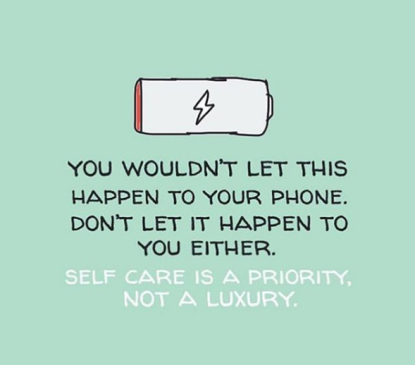
This article broke every expectation that I had for it going in and forced me to reevaluate myself and how museums operate. It resonated with me highly as I do see museum staff forgetting themselves as a part of who the museum should be serving. I think every museum, even the JMM, can consider how they are both serving and stressing their staff and see how they can better inspire staff to care for themselves. Directors, administration, and human resources staff can assess where their support for the self-care of their staff is lacking and attempt to address it as best they can. A “quality of life” survey, as the article suggested, might be a good way to start, but I believe that listening to employees and caring about their individual needs would be the best way.
~From Intern Ariella Shua
Every year, the American Alliance of Museums (AAM) puts out its TrendsWatch report. The report tracks trends and changes relevant to the museum field. Some of these developments seem more obvious than others. I was expecting to find pieces in TrendsWatch 2019 that discussed the problems museums face when it comes to keeping the public happy. I was not expecting to read a report that criticized museums themselves: apparently, museums don’t often do enough to keep their staff happy.
In TrendsWatch 2019, I was most interested by the report on self-care. Titled “Take Care: building resilience and sustainable practice,” the article takes the reader through the history of personal restoration. It begins with an analysis of the term “self-care.” Apparently, the phrase used to signify the act of marginalized communities empowering themselves. Self-care was largely political: the claim that every group deserved baseline resources, regardless of sex, religion, race, sexual orientation, etc. These movements continue today. But in modern times, the article points out, “self-care” is more likely to refer to personal wellness initiatives. TrendsWatch 2019 explains that non-profits, including museums, struggle with providing adequate self-care, and employees suffer burnout as a result.
The report made me consider the JMM’s work environment. From my perspective, it is definitely a positive atmosphere. Individual employee needs are given attention. At the same time, it’s always clear that visitors come first- and this is typical of any non-profit.
The JMM does everything it can to make everyone who walks through the doors feel welcome. This goes for visitors, volunteers, and staff members. Little things in JMM make it a pleasant place for employees. I can say that I definitely take advantage of the free coffee and the candy bowl, for example.
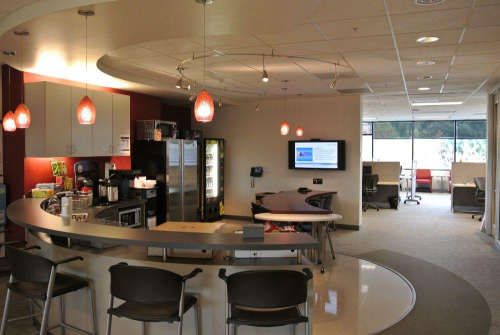
At the same time, there are areas where the JMM can improve. For example, the JMM has no traditional break room, seen in many office buildings. While volunteers are waiting for their shifts to begin, there isn’t any one space for them to stay. The library and the kitchen are the only options. But these aren’t the same as a typical office employee lounge.
One of the ways to provide self-care, without changing the building’s current layout, is to escape the confines of the actual building. As interns, we go on field trips to other local museums. These trips are a nice break from the typical daily structure. Plus, there’s the great bonus that the visits are often behind-the-scenes tours. Perhaps the JMM can offer these trips to the entire staff (I wouldn’t be surprised to find out that they already are).
Other museums work around or within the physical space that they offer. TrendsWatch 2019 mentions the Museum of Science in Boston, for example, which offers employees calming tours of the Museum’s own planetarium. Bringing in speakers or wellness experts are other ways that the JMM, or any institution, can offer employees an experience focused solely on them.
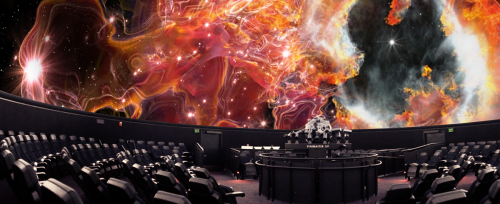
The most important point TrendsWatch 2019 makes comes towards the end of the article. It explains, “Rather than obsessing about applying one set of policies ‘fairly’ across the board, many organizational experts recommend focusing on what an individual needs to get done, and what support they need in order to do a good job.” Museums already do this when it comes to taking care of the need of every visitor. They must put an equal effort into doing so for the self-care of their employees.
~From Intern Mallory Connaughton
The article I looked at from Trendswatch 2019 was “Give Me Shelter: Everyone Deserves A Place To Live”. The article discusses homelessness and housing insecurity not only in America, but also globally. Before this article I knew that homelessness was an issue. But the article gave direct statistics for the population of the world as to the amount of homeless and how difficult it is to obtain a stable housing type.
While I myself have never experienced anything similar to homelessness, I understand the stresses of finding a home that one can afford; having been with family and friends when they move. I understand that affording reasonably priced housing can be challenging, and that it’s something that many people struggle with.
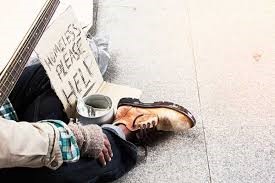
While reading through the article, one thing that struck me as odd was that it mentions how museums aren’t considered welcoming and inclusive; “Museums are not commonly treated as safe spaces by large portions of their communities, including people experiencing homelessness and housing insecurities”. This took me off guard, as I had never thought of that. I always loved visiting museums; I still do. But I never really thought of them from others’ perspectives. I had always viewed museums as places for everyone, to learn new things and look at artefacts and be with friends. But, as the articles pointed out, museums are viewed as a part of Maslow’s hierarchy, residing at the top – and that “Museums need to serve not just people who have reached the ‘tip of the pyramid’ but those who are not yet adequately housed, fed, or safe”.
This got me thinking of different ways that museums could open more to their communities – all aspects of the community. The end of the article does a great job highlighting actions museums can make, although a few stood out to me as things that all museums should be doing. The first is educating not just the staff but also the visitors about homelessness and housing insecurity, the second is sharing stories of those who have/are experiencing homelessness and housing insecurities. These two are easy steps to take, educating the public and providing insight to these communities who may not be able to tell their stories in a common setting, raising awareness.
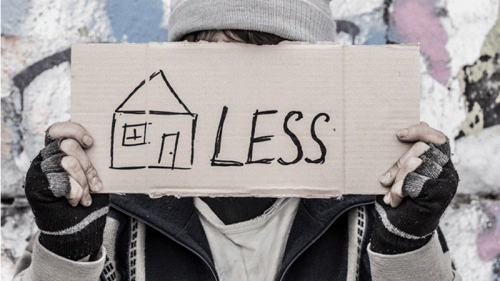
Within my past few weeks at JMM, I’ve experienced several programs where people told their stories, one being two classes from a local middle school and elementary school, the other being a second-generation Holocaust survivor. Sharing our stories is a strong part of the museum, even the permanent exhibit, The Voices of Lombard Street, does it. At JMM we can share stories in an inclusive and welcoming way, starting to create the welcoming and inclusive environment that some people don’t see at museums. It may be just a start, as there are many factors that go into fully welcoming a community into a shared space, but it would be a great start that could progress into something amazing.
~From Intern Megan Orbach
In an effort to investigate certain trends and data and their relation to museums, I read an article titled, “Give Me Shelter: Everyone deserves a place to live”. This article tackled the issue of homelessness and what museums can do to help.
I agree with the article’s claims that museums can make a great impact on the homeless community and the greater community in general by being accessible to everyone and by making sure staff understand how to be inclusive and resourceful.
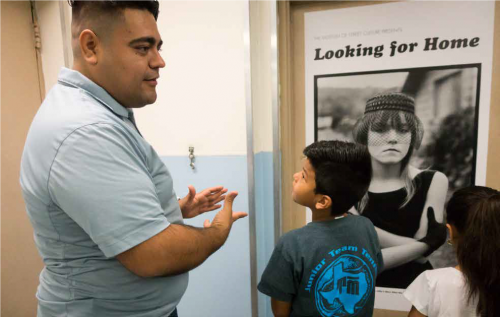
The JMM specifically can apply the issue of the lack of home security to its goals and mission. For one, JMM already does programming with students of diverse socioeconomic, race and gender backgrounds and can continue to do so in order to make sure that it is maintaining its inclusive status. Further, the museum, along with all other museums can provide multiple ways for people to process information from exhibits. This could be through digital exhibits, for example, or audio learning, which JMM is already working towards. Audio based learning does not just serve the visually impaired community, however, it also serves people who may not be able to read. I do also agree it is part of a museum’s duty to serve its surrounding community and not just serve the elite.
Even though museums may not directly be able to give individuals homes, they can allow homeless individuals a chance at forming a network and a chance to learn more about their community. This in turn, will likely make them feel less isolated and more able to get support.
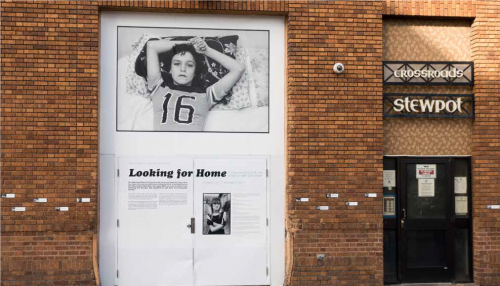
““Looking for Home” at the Museum of Street Culture in Dallas features the photographs of Mary Ellen Marks documenting the life of Erin Blackwell Charles (a.k.a. Tiny). Photograph by Alan Govenar, courtesy of Documentary Arts.” Via.
Prior to really being immersed in a museum and learning a lot about museums and their functionality, I did not realize just how much of an impact they can make on their communities. The issue of homelessness and isolation is not one with no relevance to museums; in fact, museums have great power in their respective communities and they must come up with effective ways to positively impact their cities.
